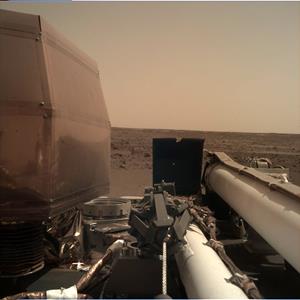
Teledyne image sensors power cameras onboard NASA’s Mars mission
EP&T Magazine
Automation / Robotics Electronics Optoelectronics Wireless Engineering Supply Chain image image sensors SensorsColor sensors from Teledyne’s world-class semiconductor foundry will capture all images returned to Earth from Mars
Teledyne DALSA, a Teledyne Technologies company and global leader in digital imaging, participated in NASA’s InSight Mission to Mars by providing color CCD image sensors for both the Instrument Deployment Camera (IDC) and the Instrument Context Camera. 
Teledyne partnered with Jet Propulsion Labs (JPL) to deliver the color image sensors to power the InSight mission. The camera on the Lander’s arm will provide 3D color views of the landing site, instrument placement and activities to inform engineers and scientists of the best spots for the seismometer and heat flow probe to gather measurements from the interior of Mars.
Teledyne Imaging Space & Defense group
Teledyne image sensors are not new to Mars. As recently as 2012, and in an earlier partnership with JPL, the company provided twelve black and white CCD image sensors to power the Mars Rover ‘Curiosity’. The Teledyne Imaging Space & Defense group, comprised of Teledyne DALSA, Teledyne e2v and Teledyne Imaging & Scientific, are renowned for their delivery of innovative sensing and camera solutions for the exploration of space, with capabilities across the spectrum, from infrared to x-ray imaging.
“We are pleased to join our partner JPL in this fact-finding mission,” commented Edwin Roks, group president, Teledyne Digital Imaging. “We expect this mission to tell us much about the origins of Mars, and indeed, the formation of our own planet.”
While the InSight lander began its surface operations immediately, science data collection will begin rougly 10 weeks after landing. Teledyne’s image sensors will play a major role in helping scientists and engineers decide where to place the very specialized instruments to inform the best results of the study of Mars’ interior.
